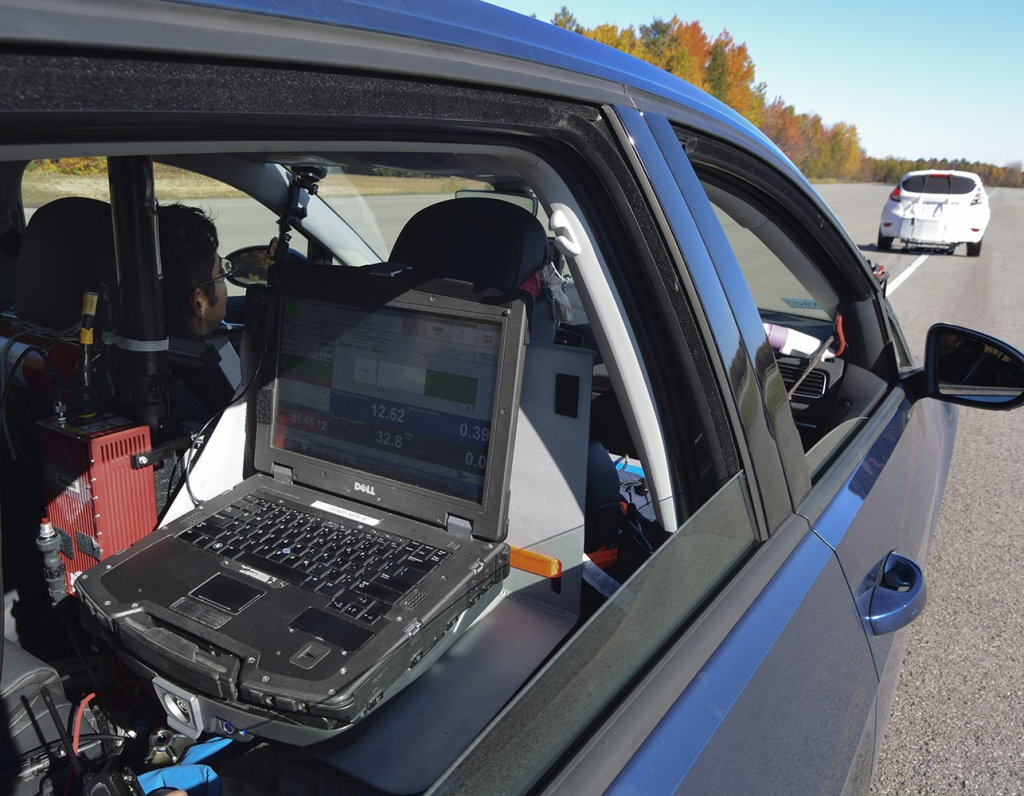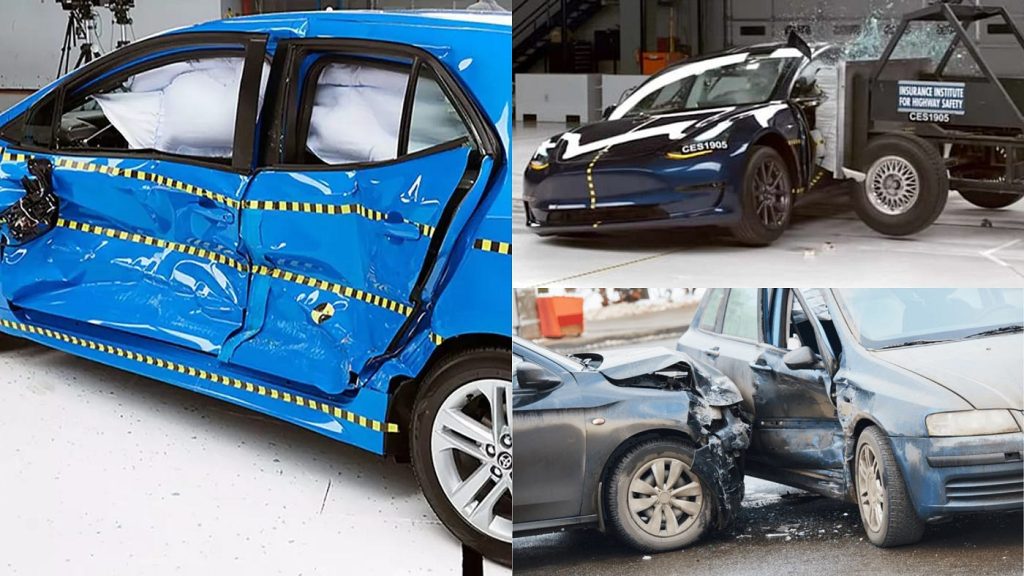Car test ratings use several different methods and metrics to evaluate the safety of cars. These methods are crucial for understanding how well a vehicle performs in various crash scenarios. For instance, impact resistance is measured to assess how well a car can withstand external forces during a collision. Additionally, metrics related to injury assessment include specific tests for different parts of the body, such as the head and chest, as well as rollover evaluations. These comprehensive ratings help consumers make informed decisions about vehicle safety.
We will explain these metrics below, illustrating their importance in the automotive industry.
The importance of car test ratings cannot be overstated. They serve as a benchmark for safety and performance, influencing manufacturers to improve design and technology. In a market where consumer trust is paramount, high car test ratings can strongly impact sales and brand reputation. For instance, vehicles that score well in crash tests often highlight this information in their marketing strategies, attracting safety-conscious buyers.
What equipment is used in car test ratings?
In the automotive industry, safety is paramount, and manufacturers depend heavily on car test ratings to maximize passenger safety. These tests require specific expertise, equipment, and systems, including:
- High-speed cameras.
- Dummies with sensors
- Data acquisition systems.
- Various sensors.
- Analysis software.
Dummies are designed and used to simulate a non-fatal collision to measure the likelihood of human injury in the event of an accident. These dummies have advanced sensors that mimic the human body’s response to impacts, accelerations, and deflections, providing invaluable data on potential injuries.
The data collection systems are mounted in the test vehicle and connect to sensors that measure displacement, force, and acceleration. This integration ensures that all relevant data is captured accurately during crash tests for thorough analysis.
High-speed cameras are essential in automotive crash tests, characterized by high quality and advanced image capture technologies. They allow for frame-by-frame analysis of the crash, enabling engineers to understand how a vehicle’s structure and safety features perform under stress.
Understanding the equipment used in car test ratings is crucial. High-speed cameras, for instance, not only capture the impact in real-time but also provide data for post-crash analysis. This technology helps researchers and engineers identify how different materials and designs respond during a crash. The continued advancement in camera technology allows for more precise evaluations and better safety outcomes.

The automotive industry invests significantly in research and development to enhance these ratings. Manufacturers may conduct their internal tests to anticipate performance in standardized assessments. For example, companies like Volvo and Tesla continuously innovate to ensure their vehicles surpass established safety criteria, thereby leading the industry in car test ratings.
The car test ratings must match international standards
Furthermore, advanced data acquisition systems collect real-time data during tests. They monitor vital parameters such as acceleration, force, and displacement, providing a detailed picture of the forces involved during a collision.
High-speed cameras are used to capture detailed footage of the crash tests, allowing engineers to analyze how different vehicles respond to impacts. This footage is critical for understanding the dynamics of a crash and improving vehicle designs.
The success of crash tests is confirmed by their conformity with international standards. This provides the necessary protection for passengers and drivers, ensuring that crash labs meet specifications that include equipment, test methods, and environmental conditions.
In the KSA Crash lab, we were keen to set up the lab in accordance with the exact specifications.
The car test ratings ensure you are safe and secure
Dummies equipped with sophisticated sensors simulate human reactions under various crash scenarios. These dummies, often referred to as crash test dummies, are crucial for understanding potential injuries. For example, the Hybrid III dummy is widely used in the automotive industry due to its realistic representation of human biomechanics and its ability to collect vital data during crash tests.
Crash labs conduct tests to assess injuries to various body parts at different speeds and angles. This comprehensive approach ensures that drivers and passengers are safe in all situations, significantly minimizing potential risks. One crucial aspect of these tests is the head injury assessment.
The head injury test is a vital component of modern crash testing. It evaluates the risk of brain injuries by measuring the forces exerted on the head during a collision. By capturing rotational forces and impacts, this test enhances safety assessments for vehicles, providing data that can lead to improved designs that reduce the risk of serious injuries.
Multiple test angles
The data acquisition systems play a pivotal role in gathering information during tests. They enable engineers to monitor a range of variables, including speed, acceleration, and deceleration. This data is critical for assessing a vehicle’s performance in crash situations and for making necessary improvements to enhance safety features.
Vehicle crash tests are categorized into frontal, side, and rollover tests. Each type is designed to simulate specific real-world accidents, assessing how well a vehicle protects its occupants during a collision. This categorization is essential for understanding the strengths and weaknesses of vehicle designs regarding occupant safety.

KSA Crash Lab is real now
The KSA Crash Lab is one of the most advanced crash labs prepared to meet international specifications. We simulate infrastructure and ensure that our test results reflect reality with 99.9% accuracy. This facility tests vehicles, evaluates traffic safety systems, and conducts assessments related to road and traffic safety, providing vital data to enhance public safety.

The alignment of crash labs with international standards is critical for validating test results. Compliance ensures that the methodologies and equipment used meet global safety benchmarks, which is essential for manufacturers aiming to sell vehicles across different markets. Countries like the United States and those within the European Union have stringent requirements that manufacturers must adhere to, solidifying consumer trust in car test ratings.
In the KSA Crash lab, our commitment to adhering to international specifications reflects our dedication to safety. This lab is equipped with state-of-the-art technology designed to replicate various crash scenarios accurately. By following these exact specifications, we can ensure that the results of our tests are both reliable and applicable to real-world situations.
These tests must adhere to strict international standards to ensure reliability and accuracy. Compliance with these standards assures consumers that the car test ratings reflect real-world performance and safety.
Crash tests assess the likelihood of injuries to different body parts at varying speeds and angles. For example, side-impact tests specifically focus on how well a vehicle protects occupants during a collision from the side, which is statistically more dangerous than frontal impacts. By rigorously testing all potential collision scenarios, crash labs help ensure comprehensive safety for drivers and passengers alike.
The head injury test plays a crucial role in the evaluation of vehicle safety. By analyzing how impacts affect the head, engineers can design features such as airbags and crumple zones that mitigate injury risks. The emphasis on brain injury prevention in these tests has led to innovations that enhance overall vehicle safety ratings.
For example, the setup of a crash lab includes the installation of impact barriers, precise measurement devices, and safety protocols to guarantee accurate results.
Moreover, the KSA Crash Lab continuously updates its methodologies and technologies to stay aligned with the latest advancements in automotive safety research, ensuring that all vehicles tested provide optimum protection for their occupants.
In conclusion, car test ratings play a critical role in vehicle safety, providing essential information to consumers and manufacturers alike. Understanding these ratings helps drivers make informed choices, ultimately leading to safer roads for everyone.
Each crash test is meticulously planned and executed to ensure reliability in results. Engineers analyze the data collected to make informed decisions about vehicle design and technology. Continuous improvements and innovations are driven by this data, which ultimately leads to higher car test ratings and enhanced consumer safety.
